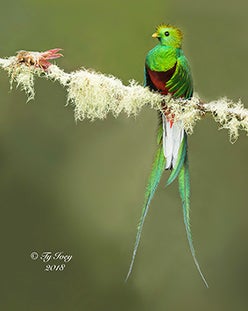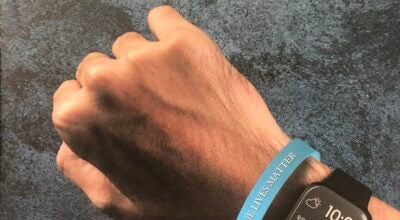A bird’s eye view: Quest for the Quetzal
Published 12:52 pm Saturday, January 26, 2019

- The Resplendent Quetzal
The Resplendent Quetzal may arguably be the most beautiful bird in the Western Hemisphere. Please understand that this is only my opinion which may differ from yours. But having seen this Central American species on three previous occasions gives me a somewhat biased perspective. Yet, I acknowledge that beauty is in the eye of the beholder.
Our adventure began in San Jose, Costa Rica. You probably know the way to San Jose so I won’t bother you with directions! Our guide met me and my travel buddy, Dr. Ty Ivey of Macon, at the airport. Soon we were transported to our hotel where we met the other photographers in our group. Our altitude was 3,700 feet above sea level.
The next day our group was climbing the twisting, winding roads into the Costa Rican cloud forest as our driver skillfully maneuvered the 15-passenger, diesel-powered van. Pariso del Quetzal, our destination lodge, sits 5,000 feet higher in elevation than the capital city of San Jose.
Pariso del Quetzal is roughly translated Quetzal Paradise. But the Arctic cold front that brought sub-freezing temperatures and snow to southwest Georgia during January 2018. reached its icy fingers into Central America as well. Weather conditions were anything but utopia. Our two-week trip was blasted with six days and nights of cold temperatures, rain, and gusty winds.
So here we were, some 2,000 miles from Georgia and it’s raining cats and dogs. What do we do? Luckily, we came prepared with rain protection, not only for our bodies but for our camera gear as well.
Resplendent Quetzals are latitudinal migrants. They especially like a wild avocado and follow the fruiting Ocotea trees as they bear from one elevation to another. Trees at lower altitudes produce fruit at different times of the year than those at higher elevations.
After check-in at Pariso del Quetzal lodge it was off to a local finca owned by a farmer named William. William lives an unpretentious life with a few cows that graze the hilly terrain of his farm that a mountain goat would have difficulty traversing. A few blackberry plants yielded fruit he hand-picked and sold at a nearby town. Some cabbage plants completed his produce patch. William’s simple home barely met the definition of a habitable dwelling — at least by North American standards. But William has a treasure on his farm worth more than his cows, produce. and quite possibly his abode. William has a wild avocado tree.
A few years ago, William considered removing the avocado tree to make room for more blackberry bushes and thus higher yields. In a wise move, he left the tree.He now makes more money from the tourists that pay to visit his property and see the Resplendent Quetzals that feed on the wild avocados than he ever made from farming.
A simple shelter covering our heads and a wooden bench near the avocado tree formed a welcome respite from the cold wind and blowing rain. We shivered as we patiently waited for the birds to arrive and feed.
A female Resplendent Quetzal appeared first. Fluttering, almost helicopter-like, she plucked a wild avocado from a limb, swallowed it, then sat contentedly, almost motionless, while her powerful gizzard separated the pulp from the seed. Soon a male joined her to feed. As he approached the avocado tree, his lengthy tail feathers flowed effortlessly like two 30-inch-long ribbons blowing in the breeze.
William, the quetzals, and the wild avocado tree have a three-way symbiotic relationship. The tree provides food for the birds while the quetzals spread the seeds through regurgitation ensuring future generations of avocados trees. And of course, William gets paid. It’s a win-win-win situation for all.
As I looked through my camera viewfinder and composed my shot, I reminded myself that we were in a cloud forest as I fought my body’s uncontrollable urge to shiver. Again, I was astonished at the iridescent, emerald, and gold colors on the bird’s head.
Sitting on a lichen-covered limb in front of me was, in my opinion, the most beautiful bird in the new world. At that moment, I didn’t care that my knees were aching from the uphill trek and standing half-a-day. I didn’t care that I was cold, wet, and generally miserable. All I cared about was this magical, mysterious bird in front of me. A bird that was worshiped by the ancient Mesoamerican peoples. A bird that serves as the national bird of Guatemala. A bird steeped in folklore and mythology. A bird I had traveled 2,000 miles to photograph, even if the weather didn’t cooperate. It was a good day after all.
Phil Hardy, an avid bird-watcher and bird photographer, lives in Americus.



